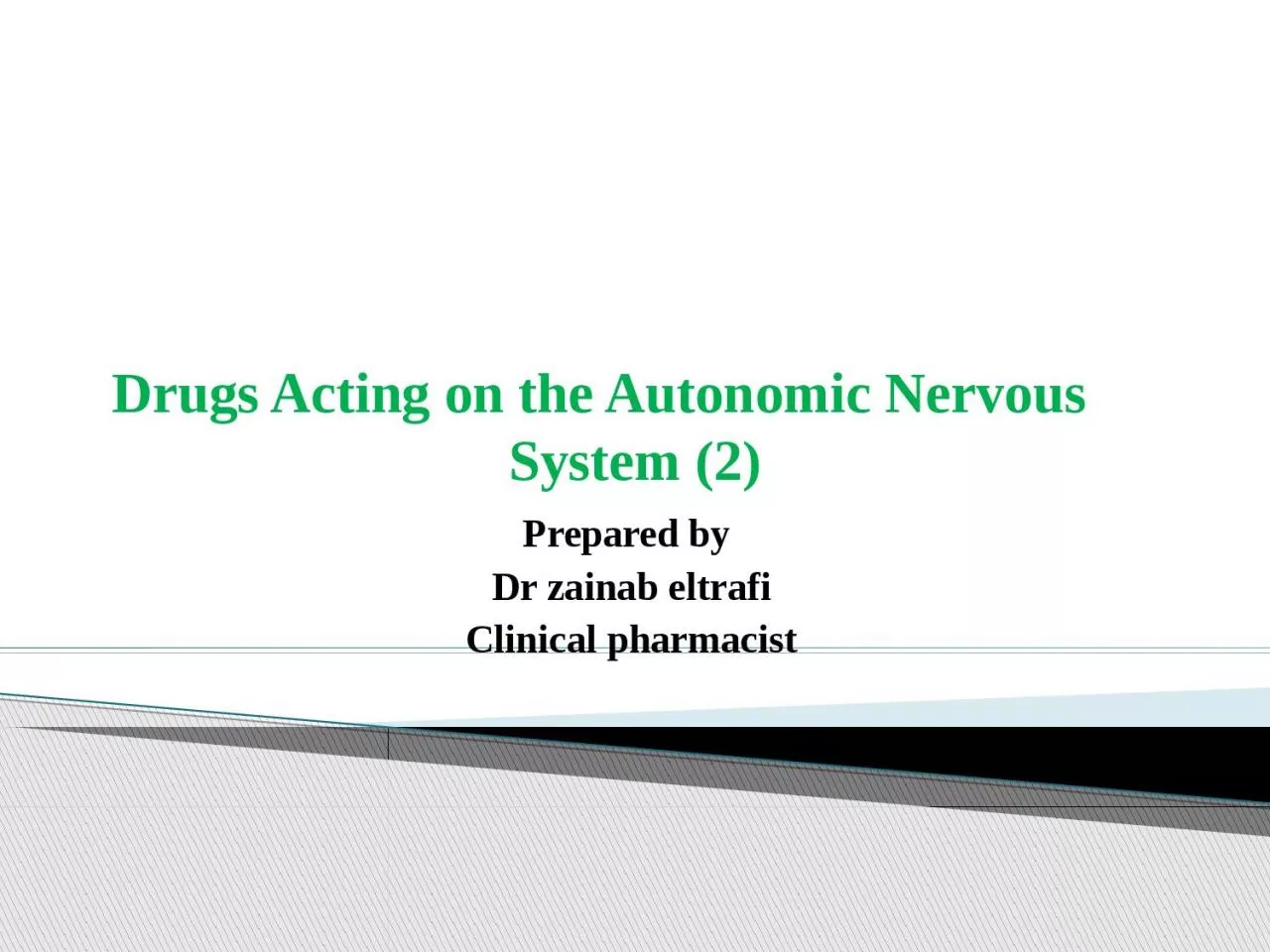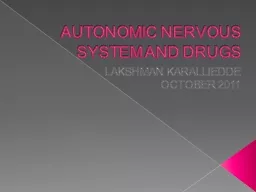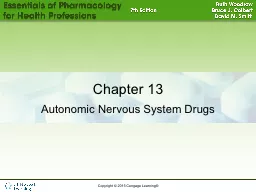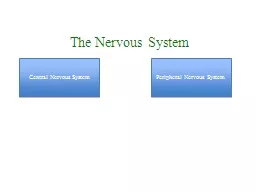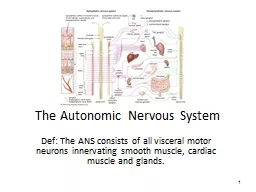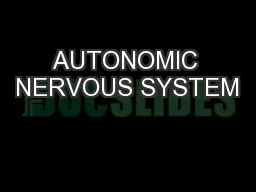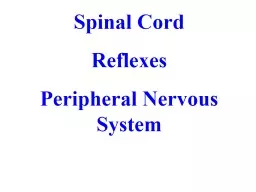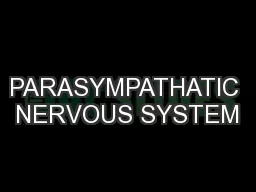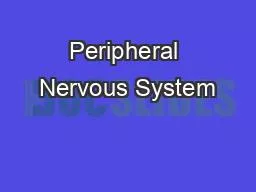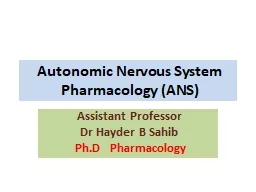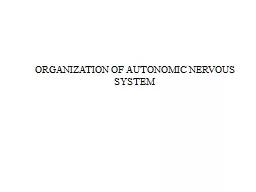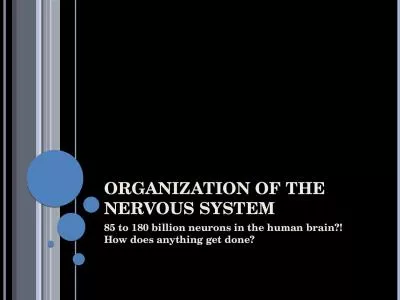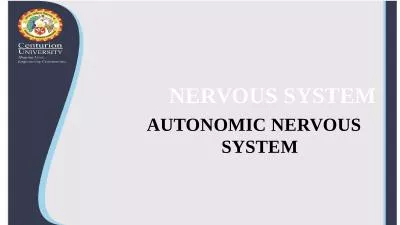PPT-Drugs Acting on the Autonomic Nervous System (2)
Author : grace3 | Published Date : 2024-01-29
Prepared by Dr zainab eltrafi Clinical pharmacist Sympathomimetic amines that contain the 34dihydroxybenzene group such as epinephrine norepinephrine isoproterenol
Presentation Embed Code
Download Presentation
Download Presentation The PPT/PDF document "Drugs Acting on the Autonomic Nervous ..." is the property of its rightful owner. Permission is granted to download and print the materials on this website for personal, non-commercial use only, and to display it on your personal computer provided you do not modify the materials and that you retain all copyright notices contained in the materials. By downloading content from our website, you accept the terms of this agreement.
Drugs Acting on the Autonomic Nervous System (2): Transcript
Download Rules Of Document
"Drugs Acting on the Autonomic Nervous System (2)"The content belongs to its owner. You may download and print it for personal use, without modification, and keep all copyright notices. By downloading, you agree to these terms.
Related Documents

